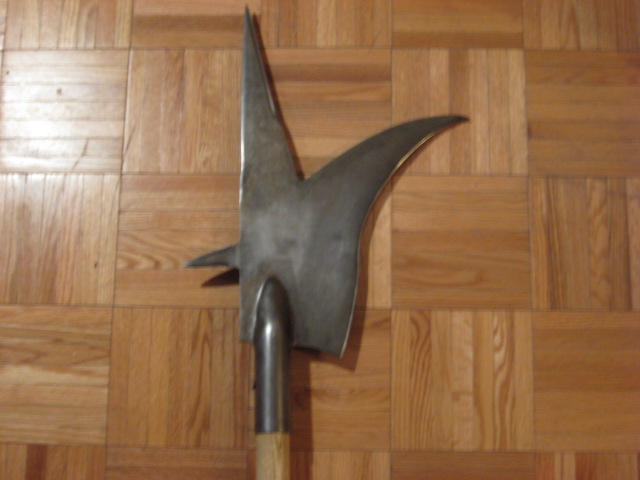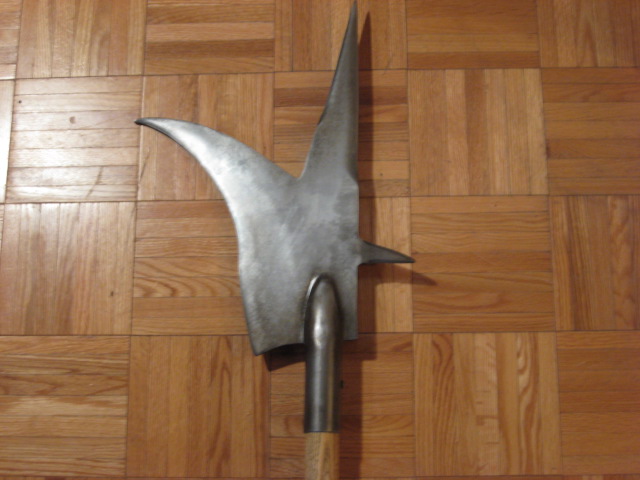http://www.arms-n-armor.com/pole030.html
I ordered the head only and mounted it myself onto an 1 1/4" pole that I reduced the diameter to 1 1/8 to fit into the socket.
The outside of the socket is not completely flush with the outside of my pole while the standard version by A&A uses an 1 1/8" pole.
Mine is a bit shorter overall at 79" compared to the standard A&A model which is stated on the site at being 83".
Craig also made some minor changes to the standard model that I was very pleased with:
A) The main axe blade part below the sickle hook has a bit of subtle belly rather than being strait.
B) The tip of the sickle/hook has a reinforced tip of surprising design that Craig told me he discovered on some period Bills and decided to add this feature to my custom version: This reinforced tip is like a miniature adze cutting edge a bit like a chisel at 90 degrees from the axe to sickle main edge of the Bill.
This would make the tip more robust and I think would really dig into a soft target and grab aggressively at maille or an armour joint at the sacrifice of the last inch or so of sickle edge getting wider and not being sharp.
But the actual adze like/chisel edge is sharp. :eek:
The top spike is sharpened on both sides for about 2/3 of the length of the top spike.
The back spike is also sharp.
One advantage of getting the head unmounted is that in hand it felt very robust and I could also weight it by itself, and it weighs 2 lbs 12 oz.
Mounted the 1/8" thickness of the blade seems thinner but because I could feel it's mass unmounted I know that it is far from fragile !
The steel plate that forms the head is continuous through the socket and it seems like the socket is slotted for the plate to fit into and then welded seamlessly to the plate, this creates a web of 1/8" steel in the tapered part of the socket.
This may not be the way these where put together in period but I think it's stronger this way than if the plate had been cut out and the structural integrity totally due to the welding of the plate to the socket.
The haft was cut with a slot to fit onto this web to be able to have wood in the tapered part of the socket, but could have been cut square but would have been more shallowly fitted into the socket: I don't think this would make any structural difference but I preferred the haft to fit most of the tapered part of the socket.
NOTE: If this description seems a bit hard to understand I made a drawing of it that is in the pics attached to this informal review.
Also, the finish is not the original finish, as I aged the finish using Dijon mustard I left to dry on the head after stippling it on with a wet wipe. I cleaned this with fine synthetic steel wool and repeated this a few times to randomize the " staining " of the steel.
Dijon mustard seems to give a dark grey staining and after cleaning and oiling it doesn't seem to be a rusting process but really a staining that produces a very nice patina of a Bill used and weathered but never left to rust and well taken care of.
I also added on a steel butt that may not have been done historically that I bought from Kult of Athena:
http://www.kultofathena.com/product.asp?item=...r+Butt+Cap
This feels like a solid weapon and quite frankly is probably the scariest weapon I have after I gave the edges just a little extra sharpening. Handling feels both authoritative but not over ponderous and with enough sharp edges to cut, chop or grab in numerous ways as one has a thrusting point, an axe edge, a sickle edge with a reinforced point and a back spike.
I really appreciate that Craig added a few extra custom features based on more recent research, and that A&A seems to constantly upgrade their work when they find new information about the historical weapons on which their catalogue weapons are based. :D :cool:
I may add more to this review if something I forgot to mention comes to mind or I find other things to add.
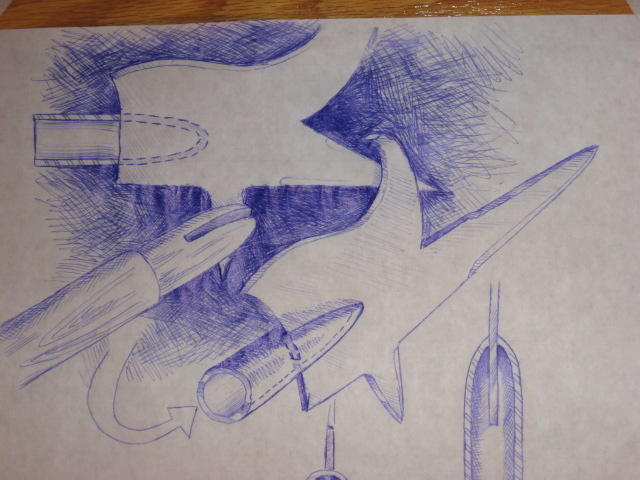
Cross section drawings of socket and the way the haft was carved to fit.
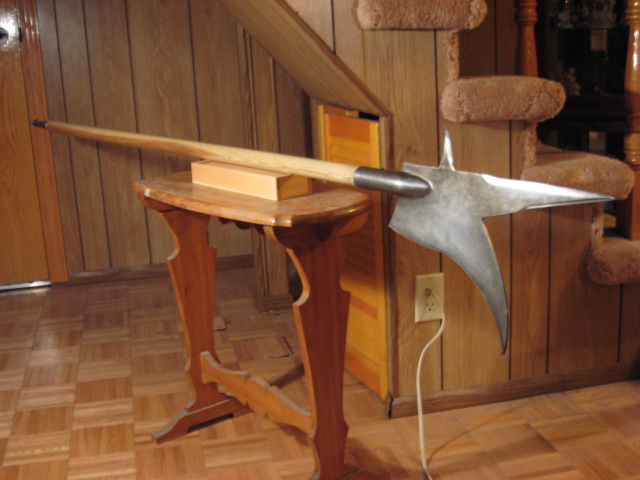
Low cealing: Only way I could show the whole thing !

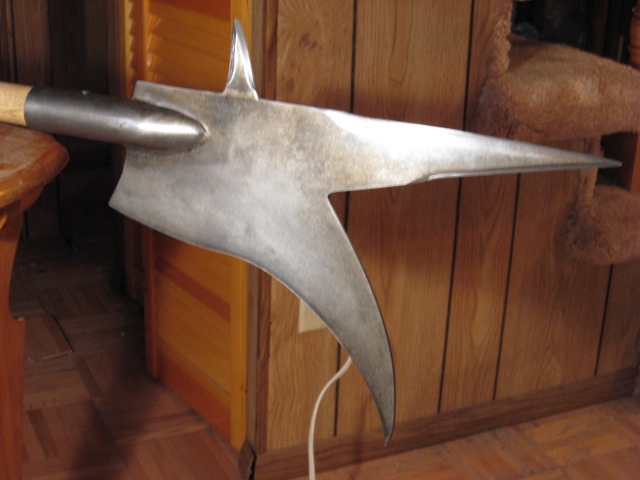
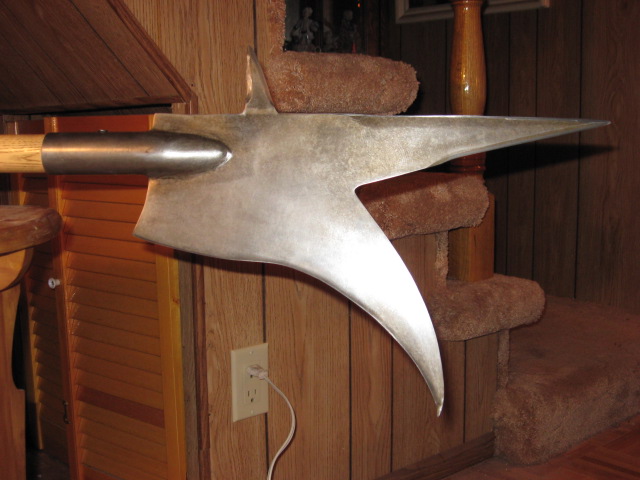

Steel pin + Epoxy holding it all together.
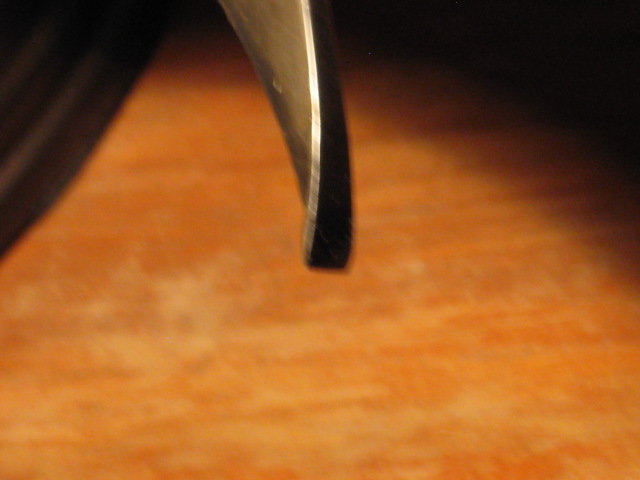
Adze/chisel edge close-up.
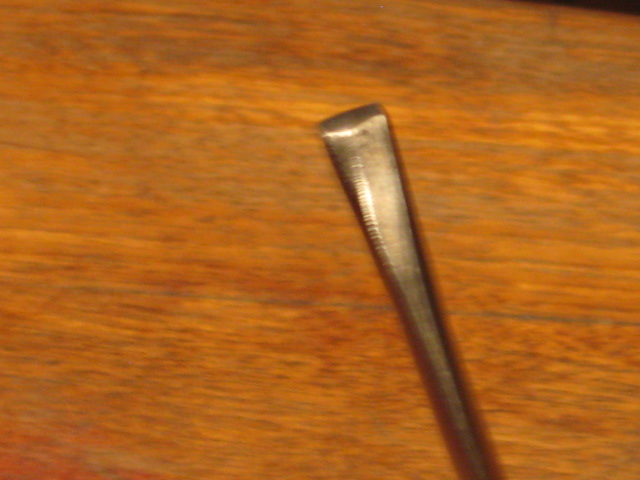
Adze/chisel edge different angle.

